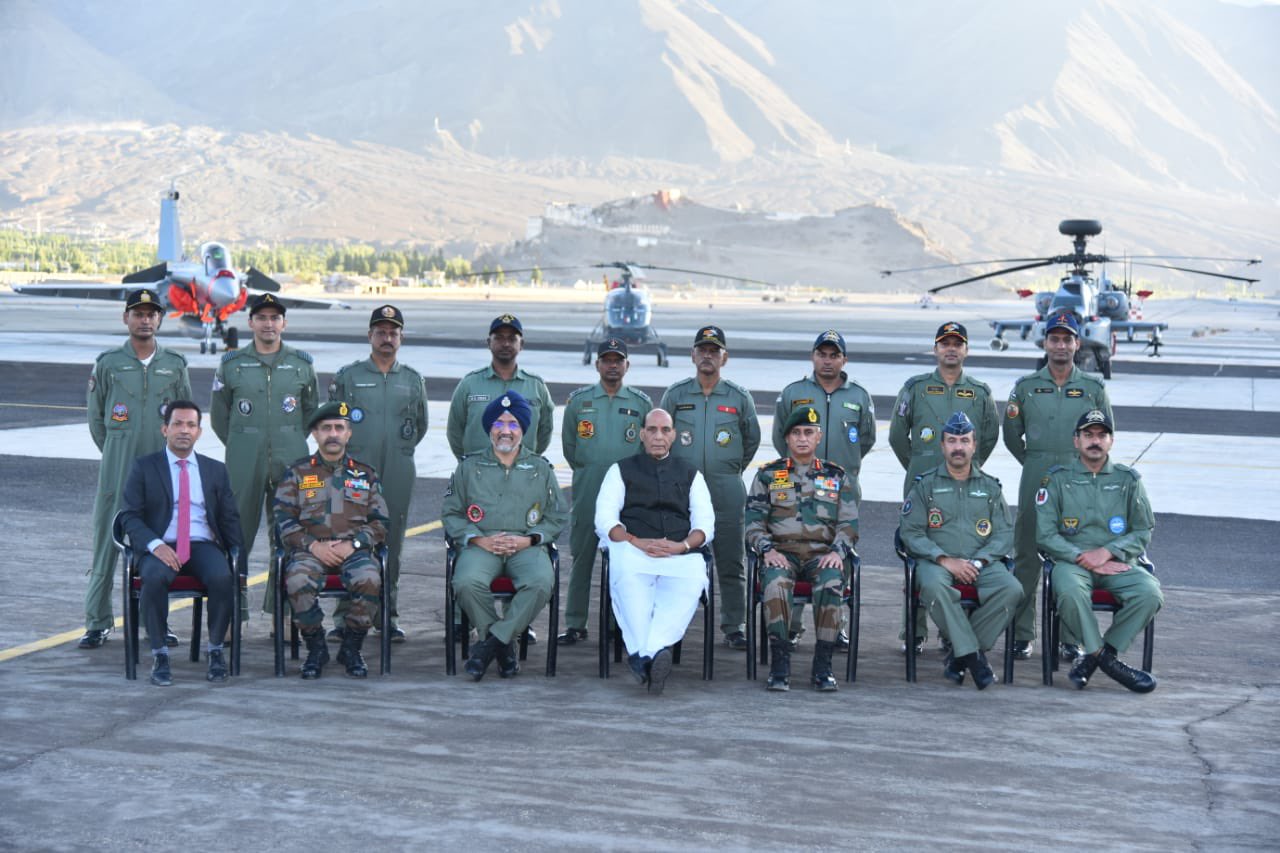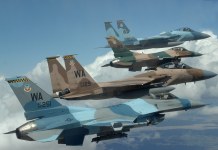It seems India’s Chief of Defence Staff (CDS) is facing an uphill task in trying to convince the three services – the Indian Army, Navy and Air Force of the “importance” of having theater commands.
- At €7.8B, Why Indian Rafale Jets Are ‘Double The Cost’ Than Egyptian Rafales?
- Why Did Netizens ‘Mock’ Nigeria For JF-17 Deal With Pakistan?
Turf wars among the Army, Navy, and Air Force is a common feature all over the world, but the open row that broke out on July 2 during an online seminar in Delhi between CDS Rawat and Air Chief Marshal (ACM) R.K.S. Bhadauria over the role of the Indian Air Force (IAF) in the planned theaterisation of joint commands has surprised many security observers.
These dissonances poorly exposed the country to the major militaries of the world that India is not yet clear what its air power should be.
The Indian Air Force has got some reservations on the nature of the proposed theater commands is well-known, but it is the CDS who “opened” the debate on the nature of the air power, though he did that while answering a question.
Going by the press reports, the CDS explained that the IAF was not just responsible for air defense, but mandated to provide air support to the Army and Navy and that the entire resources of the air force are not controlled by one agency.

But what may be found unfathomable that the CDS of the country (the newly-created post that needs restraint and responsibility in every word uttered), said: “Do not forget that the Air Force continues to remain a supporting arm (emphasis added) to the armed forces just as the artillery or engineer supports the combatant arms in the Army. They will be a supporting arm and they have air defense charter and supporting the ground forces in times of war. This is a basic charter that they will have to understand”.
Many retired Air Force officers that this writer talked to are of the opinion that the words used by the CDS were not only insulting but also exposed his “little understanding” of the nature of the modern Air Force.
They totally agree with ACM Bhadauria, who had replied in the same webinar, that “It (IAF) is not a supporting role alone. Air power has a huge role to play in any of the integrated battle areas. It is not an issue of support alone. And there is a whole lot of things that go into any air plan that is made…”
‘Tensions’ Between Indian Army & Airforce
Has CDS Rawat’s Army background (he was the Army chief) clouded his judgment on the role of the IAF?
After all, discomforts in the relationship between the Air Force and the Army have a long history in India. It was only on October 8, 1932, that the then colonial British Raj had made the Air Force an independent unit, much against the wishes of traditionalists who wanted it to remain only as an “air element” in Indian forces, strictly under the control of the Army.
Not China Or India, But This Country Will Have The Strongest Air Force In The Whole Of Asia
In fact, even after obtaining its autonomous status, the IAF continued to work under the Commander in Chief of India, always an Army General. Things changed only after independence in August 1947 as Air Marshall Sir Thomas Elmhirst, when requested to be independent India’s first Chief of the Staff of the Air Force, demanded that he would accept the offer, provided he was independent of the Army. Mercifully, the then Prime Minister Jawaharlal Nehru agreed.
But the overall mindset in the military establishment took very long to change. And that mindset has been dominated by the idea that the Army is the paramount military force of the country. And the Air Force has had grudgingly accepted this reality. The IAF did not take initiative to break this thinking and played the role of a supporting service in three major wars against Pakistan and the Chinese invasion in 1962.
This mindset started changing — a trend that began after the end of the Cold War, particularly after the spectacular success of the US Air Force in what was called Operation DESERT STORM in 1991. It was a watershed moment in thinking about air power everywhere in the world, including India.
India’s Air Power Doctrine
The IAF brought out its first “Air Power Doctrine” in 1995, dealing with “the theory of war, characteristics of air power and its relationship with strategy, various air campaigns, combat support operations and aspects related to prosecuting an air war”.
Satellite Images Show China’s Xinjiang Airbase Near The Indian Border Is Hosting ‘Hypersonic’ Drones
This doctrine was revised in 2007 in the wake of what the IAF said considerable changes in technology and the evolving global security environment.
These two doctrines were earlier classified. But following their declassification, the IAF published “Basic Doctrine of the Indian Air Force, 2012”. And it continues to find its relevance even today.
This doctrine makes it pretty obvious that the IAF cannot be limited to its prowess in only safeguarding the Indian skies. Its “vision” is “to acquire strategic reach and capabilities across the spectrum of conflict that serve the ends of military diplomacy, nation-building and enable force projection within India’s strategic area of influence”.
CAS visited the Squadrons, flew in a combined formation of upgraded Mirage-2000 & Su-30MKI ac and interacted with the Sqn personnel. 2/2#BalakotAirStrikes pic.twitter.com/pb7wbniWTK
— Indian Air Force (@IAF_MCC) February 27, 2021
Obviously, the IAF aims at being potent enough to manifest power outside the borders of India, which is a strategic goal, distinct from the operational or tactical roles of defending the nation from the enemies along with the Army and Navy.
The doctrine makes a clear difference between being the Air “Force” to assert India’s airpower and Air “Arm” of the Army, Navy or for that matter the paramilitary forces.
2019 Balakot Airstrikes
Exercising air power is a strategic choice that India can make when the IAF has the ability to create strategic outcomes without transiting territories on the ground. Air power can also decisively interfere with enemy land and sea operations without the reverse being true.
This happened, for instance, during the Balakot strikes in 2019 wherein the IAF hit the targets within Pakistan without reciprocal damage.
What is equally noteworthy is that the IAF doctrine repeatedly mentions “air and space power”. The doctrine is not talking of “air power” in isolation of “space power”.
To quote it, “Air power, in a classic sense is defined as the total ability of a nation to assert its will through the medium of air. It includes both civil and military aviation, existing and potential. In the modern sense, air power which has evolved into aerospace power is defined as the product of aerospace capability and aerospace doctrine.
“Air power is the strength of an air force as opposed to an attendant capability… Aviation-related research and development as also industrial capabilities have a force multiplier effect. Space capabilities further add to the above to enhance the aerospace power of the nation…. Air power doctrine is primarily a derivative of the fundamental principles that guide the application of air and space power and offers innovative ideas for the optimum exploitation of the medium.”
The doctrine talks of new areas of warfare following the ever-growing revolution in military affairs (RMA) such as electronic warfare, information warfare and cyber warfare. It says that thanks to the “evolutionary revolution”, the air power of a country is no longer seen in isolation; it now is reflected in the combination of “Air, Space, and Cyber Power Capabilities”.
Thus, at a time when the concept of air power is constantly evolving to an extent that some analysts have coined a term, “evolutionary revolution”, to reduce IAF’s role to be a supporting arm of the Army, something CDS Rawat said obviously hurts the sense of pride among the IAF officials.
Notably, in Chapter 9 of the doctrine, the IAF does talk of the importance of “jointness” among the three services.

It says: “Joint operations imply an amalgamation of the strengths of each service to produce a singular synergistic effect, which is greater than the sum of the single service parts. However, true synergy only obtains if each part is strong, competent and adaptable in its own right. Each service intrinsically possesses distinct strengths which enable the achievement of national security objectives. Matching these strengths to missions is the essence of joint operations.”
All told, the IAF today is more assertive about its role and requirements. And it is not comfortable to pursue its vision in an intellectual environment that continues to highlight a continental view of external threats, in which the Army will have the dominant role.
India’s Latest Agni-P Ballistic Missile Sparks A Fierce Debate Between Chinese & Indian Experts
Take, for instance, the ‘Joint Training Doctrine Indian Armed Forces – 2017’, which says that “India’s threats primarily emanate from the disputed land borders with our neighbours” and thus is much narrower and more traditional in scope than of the IAF (even the Indian Navy).
These “vision-differences” among the three services explain perhaps why the planned theaterisation is proving problematic. This is something that the CDS alone cannot resolve and needs political intervention from the prime Minister and defense minister, experts say.
READ MORE




